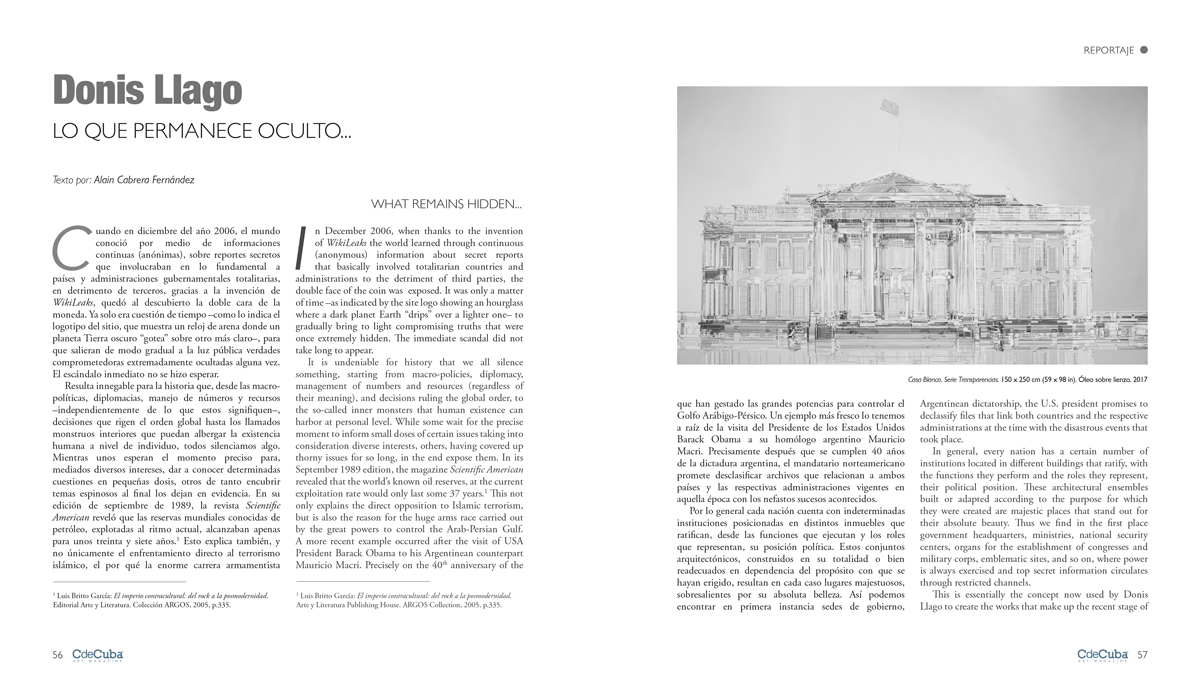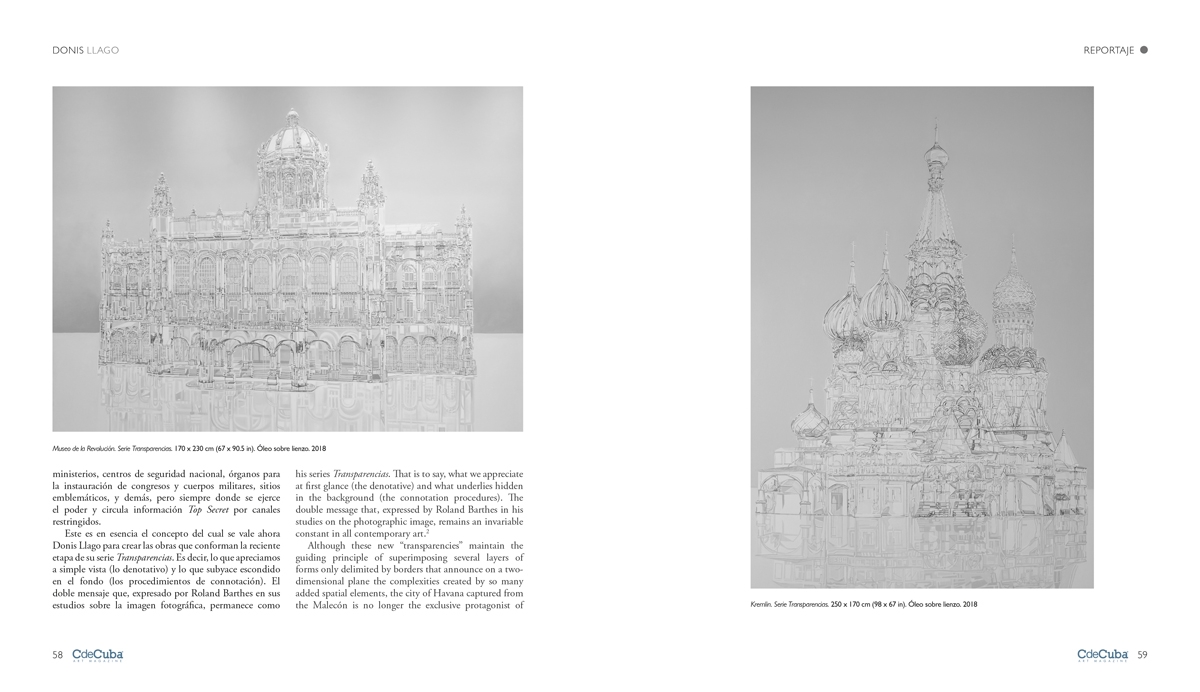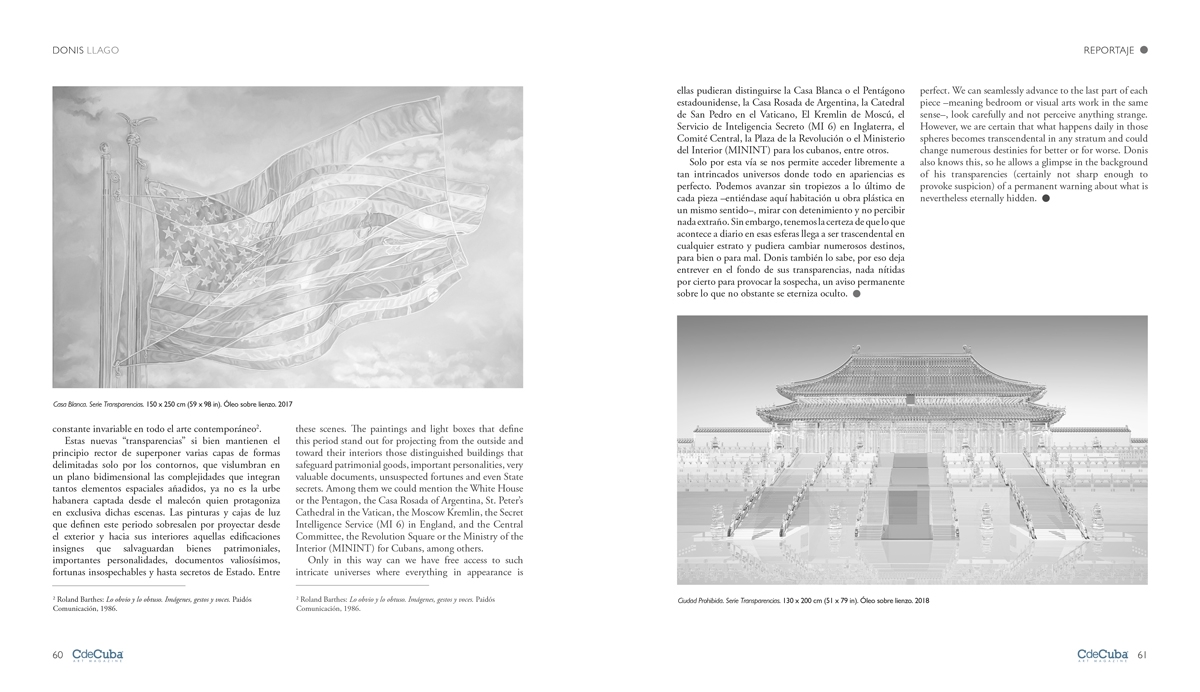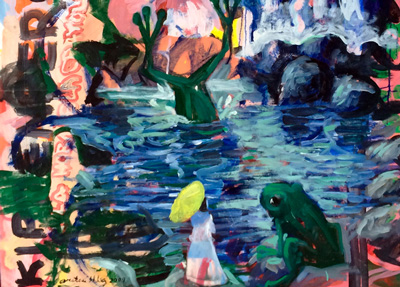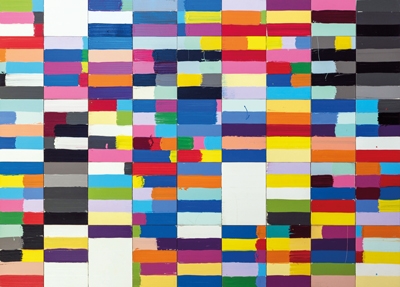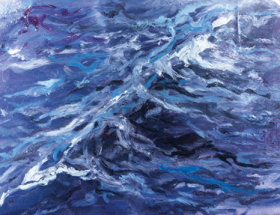[vc_row][vc_column][vc_column_text]
What Remains Hidden…
Alain Cabrera Fernández
In December 2006, when thanks to the invention of WikiLeaks the world learned through continuous (anonymous) information about secret reports that basically involved totalitarian countries and administrations to the detriment of third parties, the double face of the coin was exposed. It was only a matter of time –as indicated by the site logo showing an hourglass where a dark planet Earth «drips» over a lighter one– to gradually bring to light compromising truths that were once extremely hidden. The immediate scandal did not take long to appear.
It is undeniable for history that we all silence something, starting from macro-policies, diplomacy, management of numbers and resources (regardless of their meaning), and decisions ruling the global order, to the so-called inner monsters that human existence can harbor at personal level. While some wait for the precise moment to inform small doses of certain issues taking into consideration diverse interests, others, having covered up thorny issues for so long, in the end expose them. In its September 1989 edition, the magazine Scientific American revealed that the world’s known oil reserves, at the current exploitation rate would only last some 37 years.(1) This not only explains the direct opposition to Islamic terrorism, but is also the reason for the huge arms race carried out by the great powers to control the Arab-Persian Gulf. A more recent example occurred after the visit of USA President Barack Obama to his Argentinean counterpart Mauricio Macri. Precisely on the 40th anniversary of the Argentinean dictatorship, the U.S. president promises to declassify files that link both countries and the respective administrations at the time with the disastrous events that took place.
In general, every nation has a certain number of institutions located in different buildings that ratify, with the functions they perform and the roles they represent, their political position. These architectural ensembles built or adapted according to the purpose for which they were created are majestic places that stand out for their absolute beauty. Thus we find in the first place government headquarters, ministries, national security centers, organs for the establishment of congresses and military corps, emblematic sites, and so on, where power is always exercised and top secret information circulates through restricted channels.
This is essentially the concept now used by Donis Llago to create the works that make up the recent stage of his series Transparencias. That is to say, what we appreciate at first glance (the denotative) and what underlies hidden in the background (the connotation procedures). The double message that, expressed by Roland Barthes in his studies on the photographic image, remains an invariable constant in all contemporary art.(2)
Although these new «transparencies» maintain the guiding principle of superimposing several layers of forms only delimited by borders that announce on a two-dimensional plane the complexities created by so many added spatial elements, the city of Havana captured from the Malecón is no longer the exclusive protagonist of these scenes. The paintings and light boxes that define this period stand out for projecting from the outside and toward their interiors those distinguished buildings that safeguard patrimonial goods, important personalities, very valuable documents, unsuspected fortunes and even State secrets. Among them we could mention the White House or the Pentagon, the Casa Rosada of Argentina, St. Peter’s Cathedral in the Vatican, the Moscow Kremlin, the Secret Intelligence Service (MI 6) in England, and the Central Committee, the Revolution Square or the Ministry of the Interior (MININT) for Cubans, among others.
Only in this way can we have free access to such intricate universes where everything in appearance is perfect. We can seamlessly advance to the last part of each piece –meaning bedroom or visual arts work in the same sense–, look carefully and not perceive anything strange. However, we are certain that what happens daily in those spheres becomes transcendental in any stratum and could change numerous destinies for better or for worse. Donis also knows this, so he allows a glimpse in the background of his transparencies (certainly not sharp enough to provoke suspicion) of a permanent warning about what is nevertheless eternally hidden.
- Luis Britto García: El imperio contracultural: del rock a la posmodernidad. Arte y Literatura Publishing House. ARGOS Collection, 2005, p.335.
- Roland Barthes: Lo obvio y lo obtuso. Imágenes, gestos y voces. Paidós Comunicación, 1986.
[/vc_column_text][/vc_column][/vc_row][vc_row][vc_column][vc_column_text]
[/vc_column_text][/vc_column][/vc_row]
